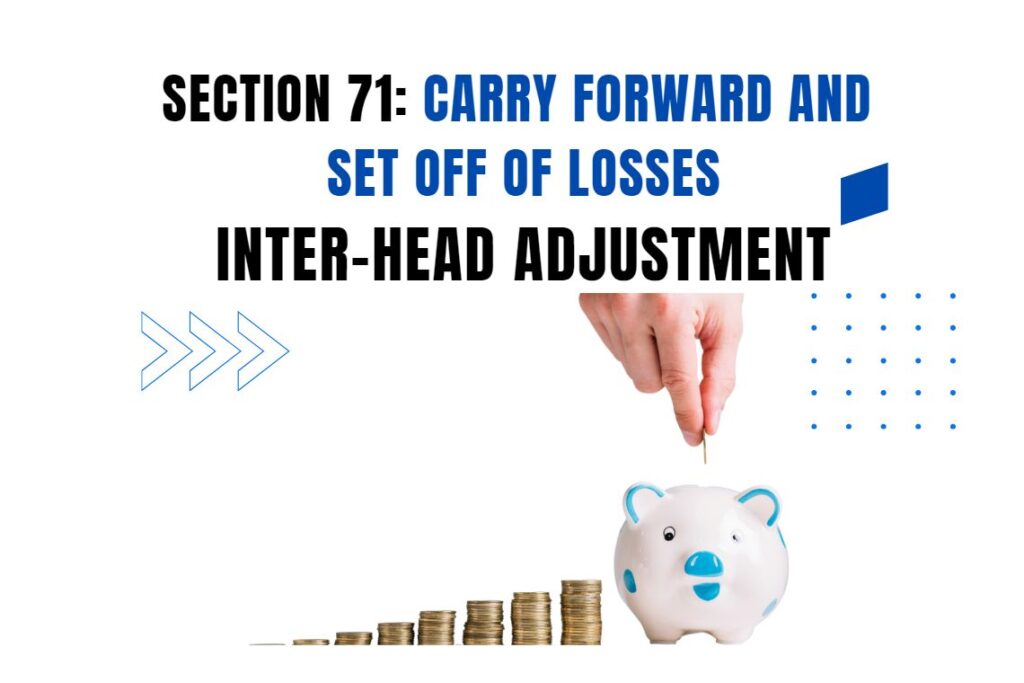Section 72 of the Income Tax Act, 1961, governs the carry forward and set-off of business losses, allowing taxpayers to adjust current-year losses against future profits. Below is a detailed breakdown of the provisions, conditions, and recent amendments:
1. Key Provisions of Section 72
A. Eligibility for Carry Forward
- Applies to non-speculative business losses(speculative losses are covered under Section 73).
- Losses can be carried forward for 8 assessment yearsfrom the year of incurrence.
- Exceptions:
- Specified businesses (e.g., under Section 35AD) can carry forward losses indefinitely.
- Unabsorbed depreciation (Section 32) has no time limit.
B. Conditions for Carry Forward
- Timely Filing of Return:
- The loss return must be filed by the due date under Section 139(1)(usually July 31 for individuals).
- Late filing forfeits the right to carry forward losses (except for house property losses and unabsorbed depreciation).
- Continuity of Business:
- The business need notcontinue for carry-forward (post-2000 amendment).
- However, losses can only be set off against business incomein future years.
- Audit Requirements:
- If turnover exceeds ₹1 crore (or ₹50 lakh for professionals), a tax audit under Section 44ABis mandatory to carry forward losses.
2. Set-Off Rules
A. Intra-Head Adjustment (Same Year)
- Business losses can be set off against:
- Profits from any other business(non-speculative).
- Income under any other head(except salary).
Example:
- Loss from Business A: ₹5 lakh
- Profit from Business B: ₹3 lakh
- Net taxable business income: ₹0 (₹2 lakh carried forward).
B. Inter-Head Adjustment (Same Year)
- Unadjusted losses can be set off against:
- Salary, capital gains, or other sources (except winnings from lotteries, races, etc.).
C. Carry Forward to Future Years
- Carried-forward losses can onlybe set off against business income (not other heads).
- Order of set-off:
- Current year depreciation.
- Unabsorbed business loss.
- Unabsorbed depreciation .
3. Special Cases
A. Amalgamation/Demerger (Section 72A)
- Losses of the amalgamating company can be carried forward by the amalgamated entity if:
- The amalgamation is approved by the NCLT.
- The amalgamated company continues the business for 5 years.
- 2025 Amendment: Losses can no longer be “evergreened” (i.e., reset via mergers). The 8-year limitnow applies from the original loss year.
B. Change in Ownership
- Companies: Loss carry-forward is allowed only if 51% shareholdingremains unchanged.
- LLPs/Firms: Losses can transfer if conditions under Section 47(xiiib)are met.
C. Discontinued Business
- Losses can be carried forward only if the business is revived within 4 years.
4. Recent Changes (Budget 2025)
- Anti-Evergreening Rule: Prevents indefinite loss extension via mergers. The 8-year window is now fixed from the original loss year.
- Applicability: Effective from April 1, 2025, for mergers/reorganizations.
5. Practical Examples
Example 1: Basic Carry Forward
- AY 2024-25: Business loss = ₹10 lakh.
- AY 2025-26: Business profit = ₹6 lakh.
- Set-off: ₹6 lakh → Taxable income: ₹0.
- Remaining loss: ₹4 lakh (carried forward to AY 2026-27).
Example 2: Amalgamation
- Amalgamating Co.: Loss = ₹20 lakh (incurred in AY 2023-24).
- Amalgamated Co.: Profit = ₹15 lakh (AY 2025-26).
- Set-off: ₹15 lakh → Taxable income: ₹0.
- Remaining loss: ₹5 lakh (can be carried forward till AY 2031-32).
6. Key Takeaways
✅ 8-year limit for non-speculative losses (speculative: 4 years).
✅ Timely filing is critical (except for house property/unabsorbed depreciation).
✅ No continuity requirement for business (post-2000).
⚠️ New regime (2025): No inter-head set-off for house property losses.
📅 Amalgamation rules tightened to prevent evergreening






